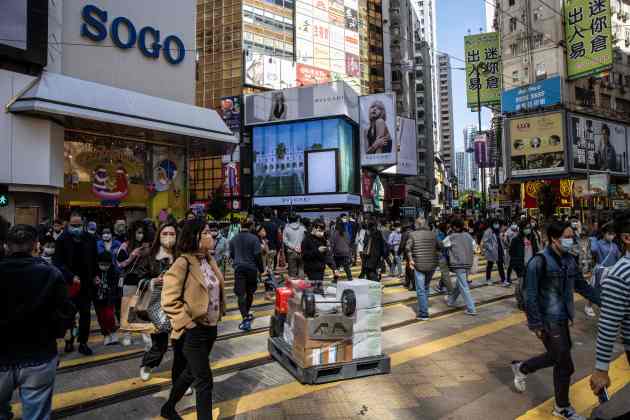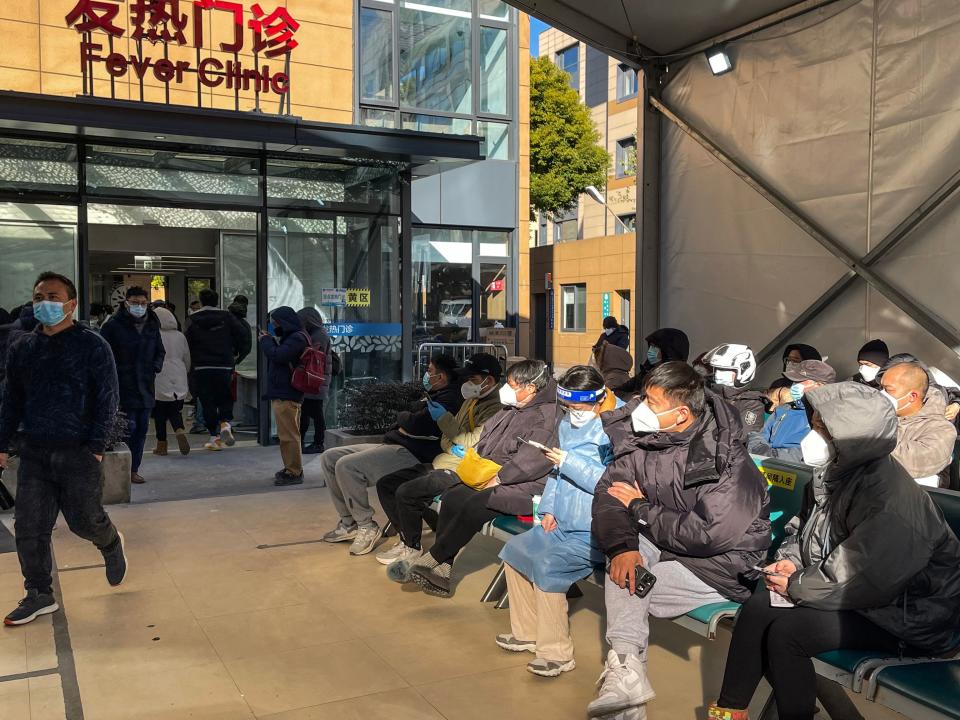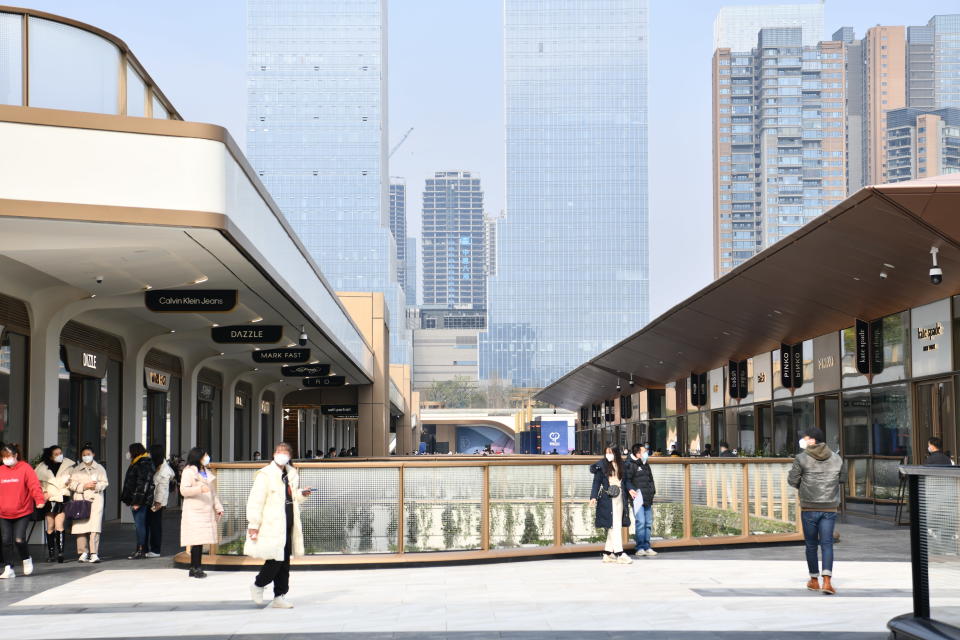What to Watch: Luxury Sector Likely to Experience U-shape Recovery in China

Beijing officially ended its three-year-long strict COVID-19 rules on Dec. 26 and announced that the border will reopen by Jan 8. There will be no more testings and quarantines for incoming travelers and travel documents will be issued to the public again.
The government didn’t offer a clear timeline for when Chinese tourists can travel again, but it said the authorities will “orderly resume outbound tourism for Chinese citizens based on the international situation of the pandemic and the capacity of all aspects of service.”
More from WWD
Fifteen minutes after the news broke, searches for international flights increased by seven times on the Chinese leading booking platform Qunar. The trending destinations were Thailand, Japan and South Korea.
Shares of major luxury groups rose as well, after learning the world’s second-largest economy would be opening up. Shares in LVMH Moët Hennessy Louis Vuitton saw a 2.7 percent rise, Kering increased as much as 2.2 percent, Hermès International jumped more than 2 percent, while Compagnie Financière Richemont shares were up 4 percent.
But the sudden relaxation from China put several countries on high alert as authorities have stopped releasing data on COVID-19 infection rates. Local media reported that the skyrocketing of confirmed cases have put the medical system to test since China relaxed some of the policies in early December after unprecedented anti-lockdown protests broke out across the nation.

The U.S., Japan, India, Italy and the U.K. have put in place various testing requirements upon arrival for visitors from or who had been in China.
At home, McKinsey expects the luxury sector to grow between 5 and 10 percent in 2023, and it will be driven by good momentum in China, with projected growth between 9 and 14 percent.
Still, luxury consultant Andrew Cai, who has more than 20 years of experience in the industry, believes that the beginning of 2023 will remain very challenging, as rising cases have stopped people from going out and shopping and several brands had to shut their stores temporarily due to all employees testing positive for COVID-19.
“For the Chinese New Year, which is by the end of January, I think it’s going to be quite disappointing. Brands need to get prepared. And they need to try all different means to really maximize the business in view that there should be a significant drop in traffic. We’re going to see better numbers for quarter two and quarter three,” Cai said during a China luxury online panel hosted by Barclays.
However, Jacob Cooke, chief executive officer of WPIC, a Beijing-based e-commerce consulting firm, believes there will be a big consumption comeback for the Chinese New Year.
“I’ve analyzed those models, too, and I don’t buy the fact that it will last longer than 30 days. If you look at Beijing, in late December, we are already done with the peak. The cycle was finished in 30 days, and now you are seeing it raging in Nanjing and Hangzhou. It’s going to be a pretty quick recovery, and consumption will skyrocket,” he predicted.

Looking at the bigger picture, Cai thinks there will be a more gradual U-shape rebound for the luxury sector after China reopens, instead of the V-shape recovery the country experienced in the second quarter of 2020.
“It is not going to repeat because the comparison base is much higher. We should remember that actually for many brands, compared to the pre-pandemic level, that business starts already like 60 to 70 percent higher. Even though they may drop 10 to 15 percent this year, they are still much higher compared to the pre-pandemic level,” he said.
The other points Cai mentioned for the 2023 outlook are that many people’s incomes have been seriously affected by the pandemic and the lockdowns in China, and people won’t return to offline shopping for a relatively prolonged period of time even after the nation has reopened due to the high infection rate.
Cai predicted, however, that in 2023 the top luxury brands will maintain their strong growth in China.
“What we have observed over the last few years during the pandemic is that all these top luxury brands, in particular brands under LVMH, are the ones that are investing the most in the market. For LVMH, I think the strategy always is to spend more in a crisis, because it’s the best time to gain market share. All this investment in marketing, branding, network expansion, and people will eventually be paid off in the years to come,” Cai said.
Cooke remains skeptical, though. “A lot of rich people have left mainland China, and I don’t see these people coming back, so let’s see how the market recovers with the lack of billionaires,” he said.
As China continued to wrestle with uncertainty, luxury and fashion brands began to look to South Korea for new growth opportunities, riding the wave of the K-pop frenzy and post-COVID-19 market reopening.
Last April, Dior presented its fall 2022 collection at Seoul’s Ewha Womans University, a first for the brand in 15 years. In May, Gucci will stage its cruise show in South Korea to mark the brand’s 25 years in the country. According to local public relations agencies, Saint Laurent is also considering putting on a destination show in South Korea in 2023.
Following Dior’s Seoul show, the brand opened an expansive pop-up shop in the hip Seongsu-dong district. Last September, French fashion label Ami launched its largest fashion boutique in the fashionable Gangnam-gu district.
In 2023, the cult Swedish label Our Legacy, American designer brand Gabriela Hearst and the Nordic fashion brand Totême will be opening stand-alone stores in downtown Seoul.
According to a report published by consulting agency Samjong KPMG last May, as the world’s 10th largest luxury market, South Korea’s luxury goods sector soared almost 30 percent year-over-year to $5.8 billion in 2021 and is projected to exceed $7 billion by 2024. Sales of foreign luxury brands in major department stores saw a 37.9 percent growth in 2021.
“I think South Korea has been the leader across Asia in recent years. If you have South Korea, you have the Northeastern Asian market,” Cooke said.
“Previously, we have seen Shanghai being able to set the fashion tone, but the state of Shanghai is now a bit behind, and the trendsetters have shifted to South Korea and Japan, since K-pop is huge in Japan too. South Korea is not a huge market, but its influence leaks to the sides of its boarders,” added Cooke.

